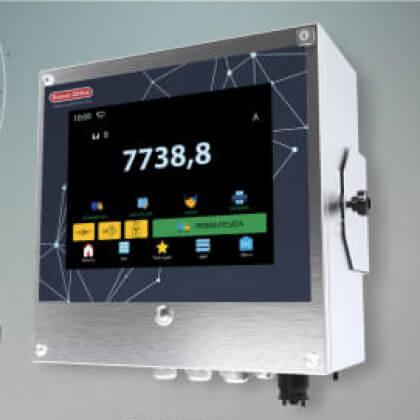
In industrial and commercial environments, monitoring load capacities is essential for ensuring safety, preventing costly machine damage, and avoiding operational delays. One device that takes the guesswork out of this process is the weight limit indicator. By measuring and displaying real-time load data, it helps operators recognize when a machine or process is reaching its safe capacity. This proactive approach reduces the likelihood of breakdowns and boosts productivity across various sectors.
From logistics companies managing massive shipments to manufacturing plants seeking to maintain precise production flow, a reliable indicator can make all the difference. These devices help ensure regulatory compliance, particularly in settings where exceeding weight thresholds can result in hefty fines or safety violations. In the upcoming sections, we will explore how weight limit indicators function, their key features, and the factors to consider when selecting the ideal model for your operations.
Understanding Weight Limit Indicators
Weight limit indicators are part of a broader weighing system that uses sensors or load cells to record the force exerted by objects. The indicator processes this data and shows an easy-to-read display of current load levels. Should the weight near or exceed safe limits, the device can issue alerts or immediately shut down the process, preventing further stress on machinery.
In fast-paced industries, a small overload can turn into a crucial bottleneck. A weight limit indicator mitigates these risks by providing real-time data that businesses can act upon at once. Operators can instantly address an emerging issue, whether it means redistributing cargo, adjusting production speeds, or halting a process for necessary maintenance. This ability to respond quickly bolsters efficiency and significantly reduces downtime.
The importance of this technology reaches beyond heavy industries. Even in smaller-scale operations like labs or retail environments, ensuring items remain within predetermined capacity helps safeguard both equipment and personnel. By offering consistent, real-time feedback, the indicator becomes an invaluable part of daily operations that upholds safety standards and optimizes resource usage, be it in a warehouse, distribution center, or scientific research facility.
Key Features and Functions
Modern weight limit indicators often feature rugged construction and compact designs to endure challenging conditions. Many units incorporate clear digital displays, allowing operators to track load levels at a glance. Some models also include user-friendly interfaces, enabling quick adjustments to settings such as alarm thresholds. This robust design, coupled with straightforward controls, ensures minimal learning curves and immediate adaptability to various workplace scenarios.
One notable function is the ability to set and customize alerts. When load capacities approach a predefined limit, the indicator can produce an audible beep or flash a visual signal. This early warning system allows operators to intervene before any damage occurs. The device can also store weight data for future reference or to facilitate traceability, proving invaluable for businesses that must maintain detailed operational records.
Integration capabilities further expand the usefulness of these indicators. Some devices connect to external systems and software, enabling seamless data logging and analysis. By examining load trends over time, companies can optimize processes, reduce waste, and extend equipment life spans. As this real-time insight feeds into broader management strategies, a simple act of monitoring weight can evolve into a key driver for improved productivity.
Selecting the Right Indicator for Your Needs
Finding the correct weight limit indicator starts with outlining your application requirements. Do you need rapid, continuous readings for a high-throughput line, or are periodic checks sufficient? The workload frequency and type of materials handled will influence whether you need specialized features such as advanced alarms or detailed data logging. By narrowing down usage patterns, you can more accurately evaluate the market and prioritize options.
Environmental variables are equally important. Harsh settings with intense heat, moisture, or dust may necessitate rugged, sealed indicators that comply with specific protection standards. In contrast, a controlled environment might allow for lighter, simpler models. Understanding your operating conditions and any relevant legal requirements, such as compliance with local health and safety regulations, ensures that the device you purchase provides consistent and lawful performance.
Budgeting and brand reputation are final considerations. Although cost is a factor, invest in an indicator that offers long-term durability and user support. Look for suppliers who can provide maintenance and calibration services so that accuracy remains uncompromised. Considering these factors in tandem will guide you toward a reliable, efficient solution that not only safeguards operations but also adds value to your entire production or logistics workflow.
Conclusion
Weight capacity monitoring is vital for any industry that needs safe, efficient, and compliant workflows. By providing clear alerts and immediate feedback, these devices help companies address potential overloads before they escalate into major setbacks. Weight limit indicators ensure that critical operations run smoothly, preserving the longevity of equipment while minimizing costly disruptions. Ultimately, they transform the simple act of weighing into a strategic component of modern industrial management.
If you are ready to bolster safety and efficiency, consider exploring the comprehensive solutions offered by Sasco Africa. Our versatile portfolio of scales and advanced weighing systems can be tailored to meet the precise needs of your operation. Visit our website to discover how we combine technology, reliability, and expert support to deliver a truly dependable range of products designed to keep your business running at peak performance.


